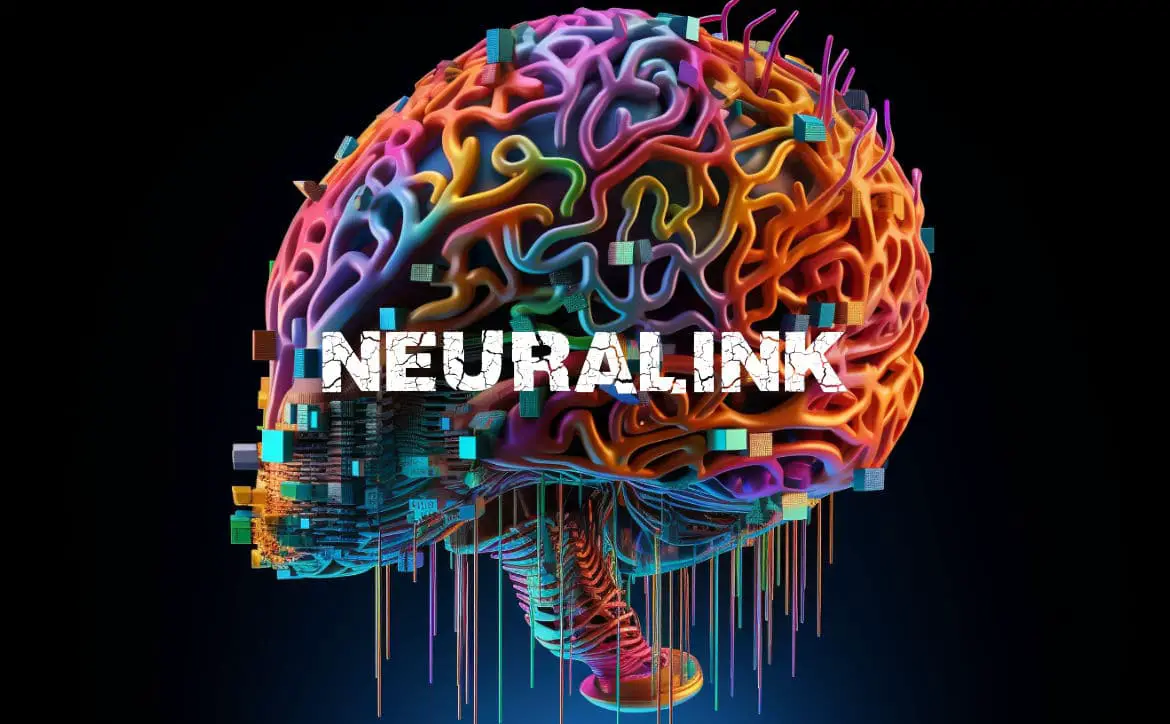Neuralink, one of Elon Musk‘s pet projects, has been making waves in neuroscience and technology. This new technology promises a future where humans and machines merge seamlessly to work together. The technology is defined as a brain-machine interface (BMI), and it has captured the imagination of many in the tech community, but it also raises important questions and concerns.
Estimated reading time: 4 minutes
Let’s explore some pros and cons of Neuralink, and you should sound off on social media with your thoughts on the subject. This article only covers a small percentage of the pros and cons; we’re sure there are many others to consider. It’s essential to note that we are taking neither side and offering this article as a way for our audience to debate the matter. So let’s explore some potential benefits and drawbacks of this groundbreaking technology.
Table of contents
Neuralink
The Pros

- Enhanced Cognitive Abilities: One of the primary goals of Neuralink is to augment human intelligence by connecting our brains to artificial intelligence (AI) systems. This could lead to enhanced memory, faster learning, and improved problem-solving capabilities. Individuals with neurological disorders could benefit from Neuralink’s ability to restore lost functionality.
- Medical Applications: Neuralink has the potential to revolutionize the medical field. It could enable precise control of prosthetic limbs, allowing amputees to regain natural motor skills. It may also offer new treatments for conditions like Parkinson’s disease, epilepsy, and spinal cord injuries by directly interfacing with the nervous system.
- Communication and Accessibility: Imagine a world where people can communicate telepathically or control digital devices using their thoughts. Neuralink aims to make this a reality, benefiting individuals with limited mobility, paralysis, or speech impairments. It could empower them to express themselves, interact with others, and engage in various activities more efficiently.
- Research Advancements: The development of Neuralink could significantly accelerate our understanding of the human brain. By observing and analyzing neural activity in real-time, scientists could gain invaluable insights into brain function and unlock discoveries in psychology, neuroscience, and cognitive science.
The Cons

- Ethical and Privacy Concerns: Integrating our brains with AI raises ethical questions regarding privacy, consent, and control. Will Neuralink be used responsibly, or could it potentially lead to invasive surveillance or manipulation of thoughts? Safeguards must be in place to protect individuals’ autonomy and ensure their personal information remains secure.
- Long-Term Health Risks: Implanting devices directly into the brain carries inherent risks. Although Neuralink intends to use minimally invasive surgical techniques, there is a possibility of infection, damage to neural tissue, or even unforeseen side effects. Extensive research and rigorous safety protocols must be implemented to mitigate these risks effectively.
- Accessibility and Inequality: The cost associated with Neuralink could create a significant barrier, limiting access primarily to the privileged few. If the technology becomes a luxury only affordable to a select group, it could exacerbate existing inequalities and create a digital divide, leaving marginalized communities further behind.
- Unintended Consequences: As with any disruptive technology, Neuralink may have unintended consequences that we cannot fully predict. Rapid advances in brain-computer interfaces could unexpectedly reshape human society, challenging existing norms, employment structures, and social interactions. Society must be prepared to address these potential challenges and ensure responsible implementation.
Conclusion
Neuralink holds immense potential to transform human lives, with promising applications in healthcare, communication, and cognitive enhancement. However, it also comes with many concerns, including ethical implications, health risks, accessibility, and societal implications. As the development of Neuralink continues, it is crucial to balance the benefits it offers and the dangers it poses while ensuring that its implementation remains ethically responsible, inclusive, and mindful of individual rights and well-being.
What do you think of Neuralink? Please share your thoughts on any of the social media pages listed below. You can also comment on our MeWe page by joining the MeWe social network. And subscribe to our RUMBLE channel for more trailers and tech videos.
In some of our articles and especially in our reviews, you will find Amazon or other affiliate links. As Amazon Associates, we earn from qualifying purchases. Any other purchases you make through these links often result in a small amount being earned for the site and/or our writers. Techaeris often covers brand press releases. Doing this does not constitute an endorsement of any product or service by Techaeris. We provide the press release information for our audience to be informed and make their own decision on a purchase or not. Only our reviews are an endorsement or lack thereof. For more information, you can read our full disclaimer.
Portions of this article were written using ChatGPT and edited by our staff.
Last Updated on March 13, 2024.










